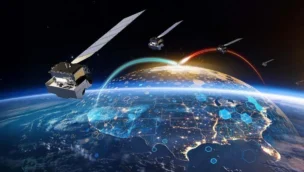Boeing Hits Key Milestone On Path To Quantum First in Orbit
HRL Labs has built a space-hardened quantum payload and demonstrated it on the ground—a key milestone in Boeing’s push to demonstrate the first quantum entanglement swap in space. The device, which is going through final environmental testing, will serve as a “ground twin” for the final payload, which is expected to reach orbit on the […]











